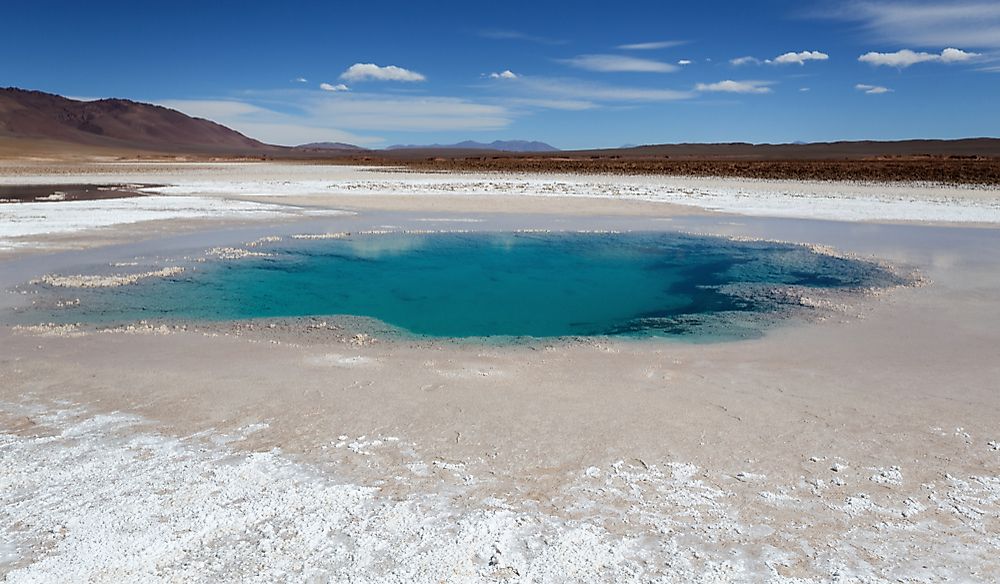What Is Unique About The Ojos de Mar In Argentina?

Ojos de Mar is a significant tourist attraction located in Tolar Grande town in Argentina. It is composed of 3-6 water bodies surrounded by a white salty desert. Ojos de Mar is a Spanish word meaning “the eyes of the sea.” It is believed that the Spanish discovered the lake on their way to explore the Andes. Today, the lake has become a tourist attraction drawing hundreds of thousands of visitors from all over the world. Ojos de Mar is famous due for its unique ability to sustain lives of stromatolites and extremophiles.
What Are Extremophiles?
The word “extremophile” is a Latin word meaning “extreme” while “phile” comes the Greek word “philia” which means “love.” Thus, the literal meaning of “extremophile” loving the extreme. Consequently, extremophiles are organisms that inhabit environments with conditions that other living organism cannot survive. Given these conditions, living organisms would die. However, extremophiles are best suited for such environments. Stromatolites are layered rock structures that form as a result of the growth of cyanobacteria. A category of rocks known as fossilized stromatolites is important because geologists use them to understand the way of life on Earth in ages past.
Features of the Ojos de Mar
The water bodies that form the Ojos de Mar are 9.8-26.2 feet deep. They are popular for their unique blue turquoise color. Ojos de Mar’s color keeps shifting depending on the position of the sun. The source of water for the Ojos de Mar is the many rocks that surround the lake. Ojos de Mar is a hypersaline and hyper alkaline lake as it contains waters that are both extremely alkaline and salty. The water temperatures are 57 °F and the waters exist at elevations of 11,520 feet.
Tourism and Conservation
Its discovery in 2011 led to the Ojos de Mar becoming a government protected area in Salta Province, Tolar Grande in Argentina. Visitors access the lake via road from Tolar Grande. While visiting, the visitors are discouraged from getting too close to the lake due to the unstable ground surrounding it and the fragile water bodies. The biotechnological significance of the Ojos de Mar is that it supports life under extremely low and high temperatures. Consequently, biologists can extract enzymes from the extremophiles for use in industrial processes such as creating enzymes like antioxidants and photolyases.











